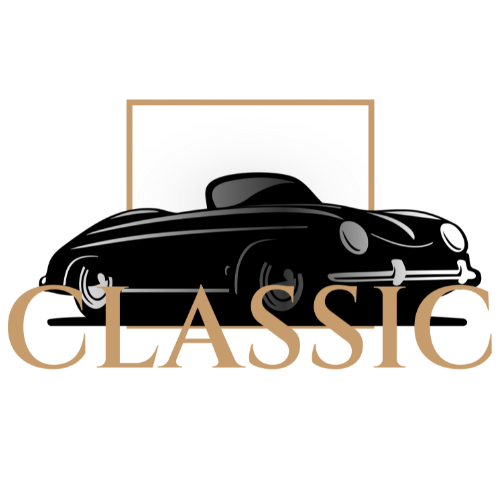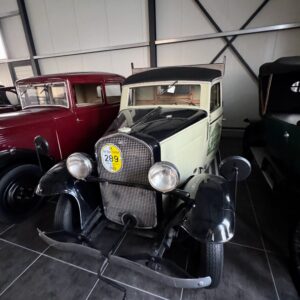Historical vehicles
Dive into the Golden Age of Historical Vehicles
There was a time when roads were just dusty tracks, and every car that roamed them was a symbol of boldness and innovation. Vintage vehicles are not just machines—they reflect a lost craftsmanship, timeless elegance, and an era when the automobile was as much an art form as a technological revolution.
Enthusiasts know it well: owning a historic car means owning a piece of the past—a living mechanism that tells a story with every turn of the wheel. From the first torpedo cars with their sleek silhouettes and sporty lines, to the sturdy veteran vehicles that dared to challenge the earliest journeys, and the majestic Edwardian-era models—true jewels of refinement… Each of these vehicles embodies a bygone, yet endlessly fascinating, time.
Are you a collector, a lover of beautiful machines, or simply curious to learn more about these rolling treasures? Discover the history and uniqueness of the three major categories of historic cars that have shaped automotive history.
Discover Available Historic Vehicles
The Three Major Categories of Historic Cars
The Torpedo Car: Elegance of the First Roadsters
Historical Context
At the turn of the 20th century, the automobile saw a rapid evolution, giving rise to iconic models. Among them, the torpedo stood out with its streamlined look and clean design. Introduced around 1908 by Captain Theo Masui, London importer of Grégoire automobiles, the torpedo got its name from its profile reminiscent of underwater torpedoes. This body style quickly became a symbol of freedom and adventure, appealing to clients seeking new sensations on emerging roads.
Key Features
The torpedo is characterized by an open-top body with no central pillars, offering a fully open-air experience. This layout enhances immersive driving—ideal for enjoying the scenery and fresh air. Interiors are often refined, with leather seats and precious wood trim, reflecting the detail and luxury of the time. Its clean lines and minimal design lend the torpedo a timeless elegance.
Fascinating Anecdote
In 1908, the Peugeot Type 105, although mainly produced as a closed limousine, was also available in a torpedo version. This model illustrates the versatility and adaptability of cars at the time—able to meet both comfort and sporty driving needs.
Why Collectors Love It
The torpedo embodies a pivotal moment in automotive history, marking the shift from horse-drawn carriages to modern cars. Its open and elegant design makes it a prized piece among collectors, ideal for vintage rallies and concours d’élégance. Owning a torpedo means holding a living piece of history, a tribute to the innovation and sophistication of the automobile’s early decades.
The torpedo remains a symbol of the golden age of motoring—where style, innovation, and the joy of open-air driving converge.
The Edwardian-Era Car: Mechanical Refinement
Historical Context
The Edwardian era, spanning from 1901 to 1910 under King Edward VII, was marked by prosperity and innovation. During this time, the automobile rapidly evolved from mechanical curiosity to a symbol of social status and luxury. Cars from this period reflect the opulence and refinement of the era—combining technological advances with exquisite aesthetics.
Key Features
Edwardian cars are defined by luxurious finishes. Gleaming chrome, sumptuous leather, and finely carved woodwork adorn these vehicles, showcasing exceptional craftsmanship. Under the hood, engines became more powerful—often with four-cylinder configurations for smoother driving. Removable roofs and custom coachwork added exclusivity to each model.
Fascinating Anecdote
The 1907 Rolls-Royce Silver Ghost exemplifies the era’s excellence. Nicknamed “the best car in the world,” it drove 24,000 km without breakdown, setting new standards for reliability and performance in the auto industry.
Why Collectors Love It
Edwardian vehicles represent the height of automotive prestige. Their majestic presence makes them ideal for parades and concours events. Their rarity and historical significance also make them highly sought-after investments, often fetching record prices at auctions.
The Veteran Car: Road Pioneers
Historical Context
“Veteran” cars refer to the first automobiles built up to 1918. Handcrafted, they were often reserved for visionaries and the aristocracy—symbolizing innovation and status. These vehicles reflect the earliest technical challenges faced by the fledgling auto industry.
Key Features
Veteran cars featured large wooden-spoke wheels and single- or twin-cylinder engines. Driving was often unpredictable due to rudimentary braking and crank-start systems. They emitted an unmistakable mechanical noise and the distinct scent of oil vapor—hallmarks of the technical challenges of their time.
Fascinating Anecdote
In 1888, Bertha Benz, wife of Carl Benz, undertook the first long-distance journey by automobile—driving roughly 106 km from Mannheim to Pforzheim in the Benz Patent-Motorwagen. Her bold journey proved the viability of the automobile to the public and led to improvements based on her observations along the way.
Why Collectors Love It
Veteran vehicles—rare and often found in museums—each tell a unique story about the birth of the automobile. Owning one is like holding a precious fragment of mechanical history, bearing witness to the genius and daring of automotive pioneers.
Find Your Historic Vehicle Today!
Whether you want to buy, sell, or rent a historic vehicle, our platform guarantees you a unique and secure experience.
Showing the single result

